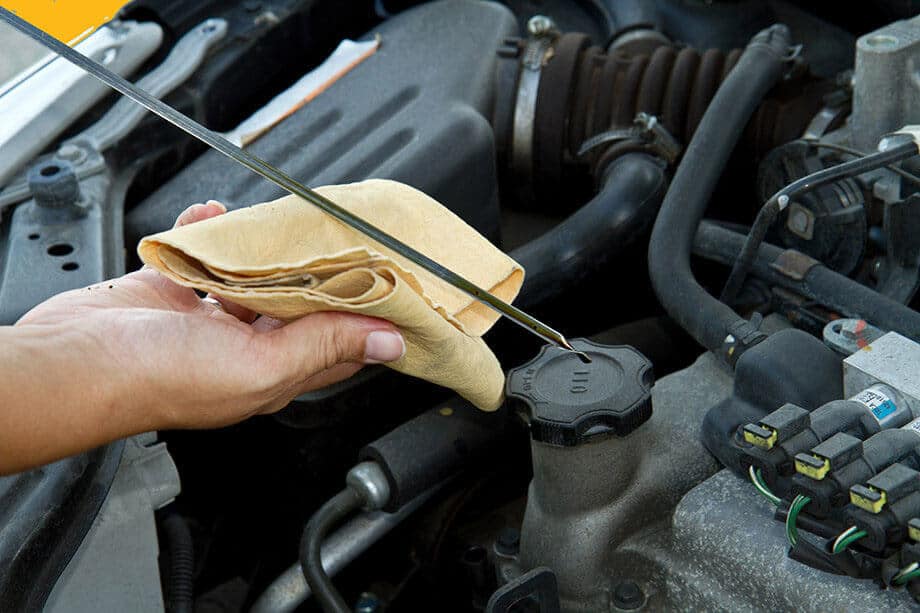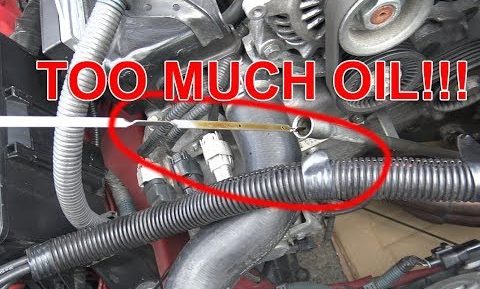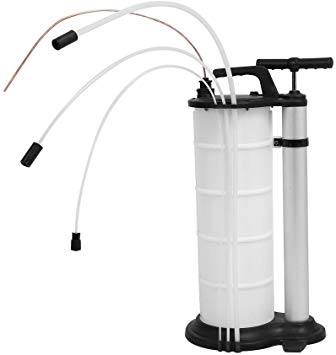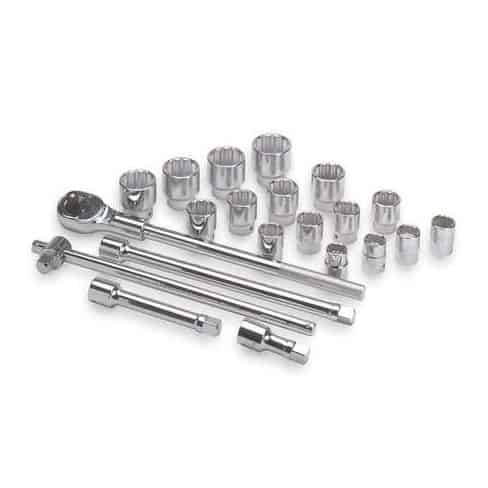
Routine oil check and replacement is a simple way of practising preventative maintenance. It is such a simple routine that everyone can do it. Regardless, you can overshoot your engine oil while refilling the oil yourself. The question is, what happens next?
Similar to low oil levels, excessive oil is a danger to your engine. A simple overfill can cost you thousands of dollars in repair and maintenance.
Should I worry if I have an auto oil overfill?

An oil overfill may lead to an oil overspill on the crankshaft. This situation is not good. The oil will be whipped into a thick foam as it gets aerated by the high rotations made by the crankshaft. When there is too much foam, the lubrication process may stop.
Your car may also experience an oil overheat and loss of oil pressure. Your car loses oil pressure because the oil pump is starved of oil and will not function as effectively as it should. The worst is your car will lack lubrication and eventually lock up.
The oil reservoirs cater to oil expansion when the engine warms up. Such may help redress the error of an overfilled oil. However, if the oil is excessive, the following can be expected.
Consequences of overfilling your oil
There is so much pressure used to move so many moving parts in the engine. All these moving parts need constant lubrication to run smoothly. Oil pressure changes can have the following devastating effects.
- Total catastrophic engine failure. It is the worst-case scenario. Your engine fails and cannot be repaired; thus, your car will need a new engine.
- Sustain engine damages. Your car may receive damage on its engine rods. The rods may get bent or leak, or you may also have collapsed valves.
- Extensive engine damage from inconsistent oil pressure levels
- Damaged spark plugs. Spark plug failure leads to ignition complications. You may need to change spark plugs frequently
- Oil deposits getting into the catalytic converter is bad for your engine.
How to check if you have overfilled your engine oil?

It is easy to know if you have an auto oil overfill if you filled the oil yourself. However, sometimes this service is done by another person besides you. You should always check your engine oil levels regularly.
To check your oil, run the engine for 5 – 10 minutes to get the oil warm. Switch off the engine and open the hood of your car. Reach for the oil dipstick and pull it out.
Wipe the oil from the dipstick with a clean, dry cloth. Return the dipstick inside and pull it out again.
Now check if the oil reading is below the maximum threshold.
Driving with an overfilled oil will no doubt lead to engine failure. To avoid such a costly and preventable mistake, you should be alert to the following symptoms.
Overfill symptoms
- Oil leak from your car. When you spot oil patches under your car, it should be enough to know you have an engine problem. Oil leaks wear your engine down. If left unchecked may result in engine failure.
- The smell of burning oil from your engine. At this stage, something is probably burning or overheating. You need a speedy resolution to avoid further engine damage
- Black or white smoke emissions from your car exhaust tailpipe. When the excess oil turns to foam, it can burn. The result is the white smoke leaving your exhaust. You can mistake this with a burning coolant. But whichever the case, your car is in trouble, and you should get it inspected. Never overlook the white smoke sign.
- Strange noise from the engine. The engine has so many movable parts. If they do not get proper lubrication, they wear and break. A single misplaced part can have a chain reaction leading to an engine blow.
- Smoke coming from the engine. Any smoke coming from the engine is a bad sign. Get your car inspected immediately.
Do This If You Have Overfilled oil
The best way to deal with an oil overfill is to drain the excess oil. There are two ways to go about this.
- The modern: less messy option
- The traditional: messy option
Modern option

This option is easy, fast and less messy. You will need a suction pump to suck out the excessive oil. Open the hood of your car and pull the oil out. You can do this from the cap access point or the oil dipstick tube.
To suck the excess oil out, you can use either an automatic or a manual pump. This method leaves you clean. You do not need to lift and crawl under the hood of your car.
Conventional option

You will need an oil-collecting pan and a drive socket wrench. Raise your car enough for you to crawl under it. Locate the oil plug.
Using your drive socket wrench loosen the oil plug until oil starts to drip on the collecting pan. Remove only a small amount and not all.
Fasten the oil plug then go to the hood and check the reading on the oil dipstick. Ensure the oil is at the right amount.
How to prevent an oil overfill from happening again
Keep the oil levels between the minimum and maximum mark on the oil dipstick. The service procedure includes a variety of steps.
- Make sure your car rests on an even platform. Lift the handbrake (set the parking brake). If it is a manual car, set the car on the first gear. However, for automatic cars, leave the gear stick in the park.
- Put the engine off.
- A good time to check the oil is after it has settled back to its sump. Allow the engine to cool a few minutes if it was running.
- Open the oil access cap and add oil until it reaches the crosshatch section of the oil dipstick. Be careful not to overfill. Allow the oil to drain back as you fill it slowly.
If the oil falls between the minimum and maximum points, then there is no need for you to add more oil.
How much oil should you put in your car?
You should change your oil every 5000 miles or six months. Sometimes we need a refill before hitting these targets. You need to know this.
Quarts is the unit used to measure the oil in your car. One quart is the difference between the lower mark and the upper mark. This data is all you need to make good oil estimates when doing your oil refilling.
For instance, to add a half-liter of oil to your car, you should add a quarter of the oil to the dipstick. It will help to prevent overfilling.
Dimensions also affect the amount of oil your car uses.
Depending on the size, your engine may consume between 5 to 8 liters of oil. Small engines use less oil to balance the engine volume.
A four-cylinder engine car will use 5 liters of oil. A six-cylinder engine uses 6 liters of oil, whereas an eight-cylinder engine uses between 5-8 liters of oil.
Conclusion
Overfilling oil to your car is a significant concern that can bring damage to your engine. You need to keep the oil between the upper and lower marks of the dipstick. Take care not to exceed.
Always be in the habit of checking your oil levels regularly, especially after your car is from the workshop. They are humans and can make mistakes.
Never drive your car after showing any of the mentioned symptoms. At the earliest sign of an oil overfill, pull your car to the side and check the oil dipstick.
In some cases, the symptoms may overlap with other engine complications. Some of these symptoms may be aligned with other critical components of the engine. It is good practice always to take your car for inspection regularly. Constant service and repair maintenance will keep your car running smoothly.








